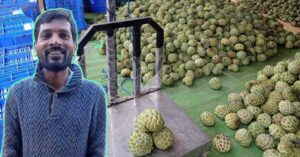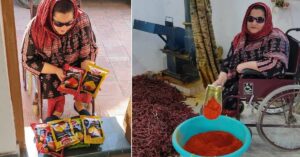Startup’s Tree-Free Paper Saves a Tonne of Wood, 55,000+ Litres of Water Everyday!
What goes into making this paper? Cotton rags, flax, lemongrass, mulberry, rice stubble, coffee husks, banana stumps, coconut husk, and even elephant poo!
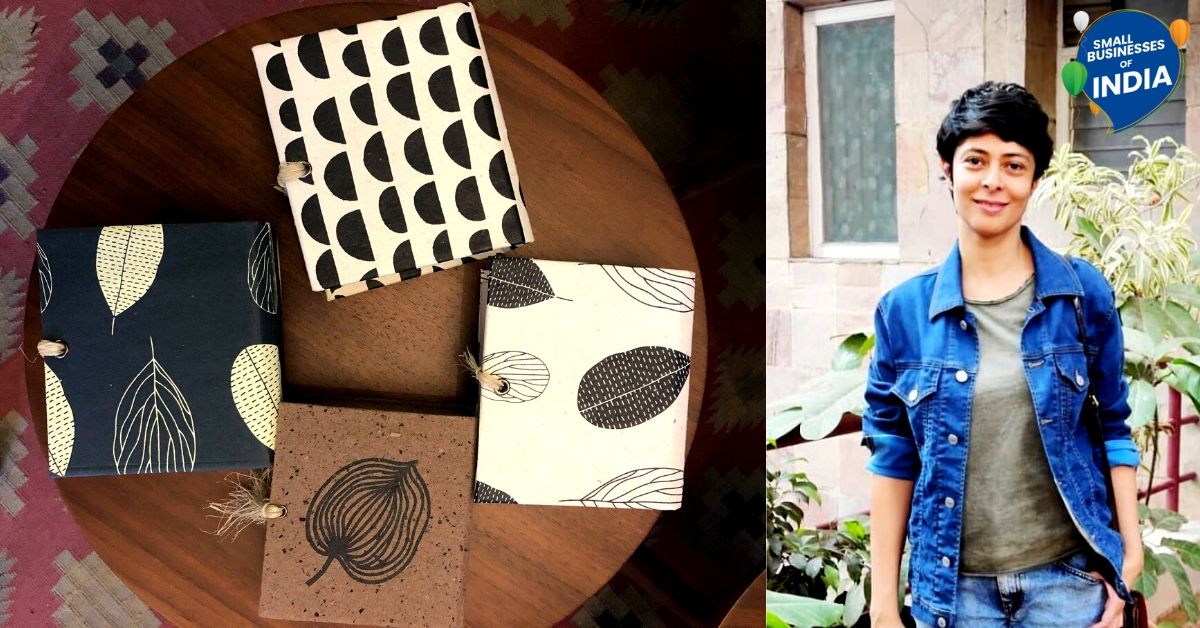
Have you imagined what the world would be like without paper? Sure, going digital is always an option. But, imagine not being able to hold a book in your hand, or a newspaper or a notebook to write down your thoughts and observations. It indeed seems like a sad world, doesn’t it?
Although paper is cheap, the environment pays a heavy cost. About 3.3 million hectares of forests are cleared every year to make paper from trees. This not only renders wildlife in dense forests homeless, but also has adverse effects on the ecosystem.
So, is there a way to prevent this?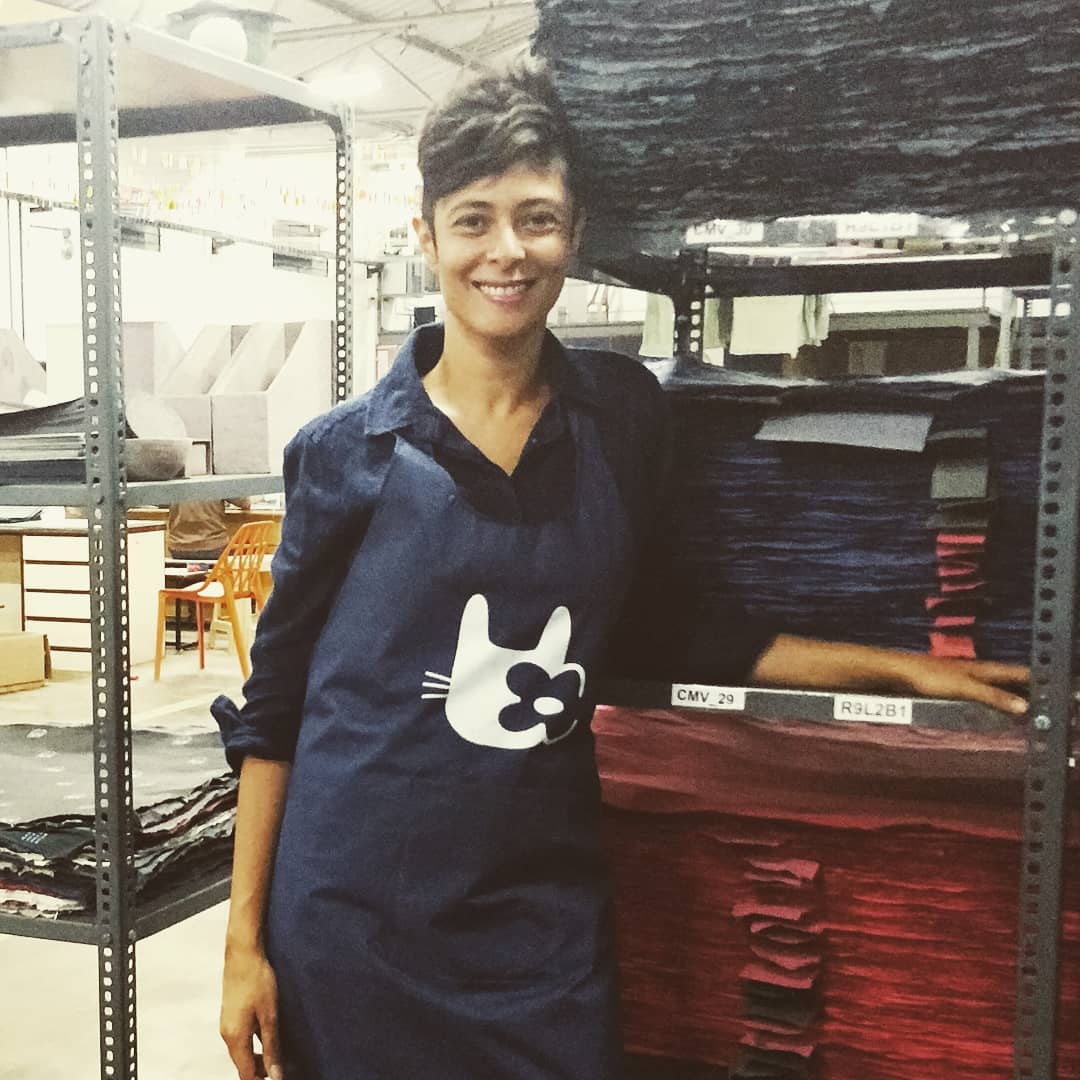
Entrepreneur Kavya Madappa feels that this destruction is not only unnecessary but also cruel. Having grown up in the midst of greenery in Coorg, Kavya always had a deep connection with nature. Therefore, when she learnt about the environmental degradation caused by the paper industry, she was shocked.
Wanting to change how paper was being made, Kavya started researching alternatives for tree-free paper.
“I found that you only need two things–pulp and water–to make paper. Any pulp that has over 68 per cent cellulose is perfect for making paper,” she says.
Thus, with this vision, she launched her venture, ‘Bluecat Paper’, in early 2018, where not a single tree is cut to make paper!
Instead, paper is made using secondary agro- and industrial waste like cotton rags, flax, lemongrass, mulberry, rice stubble, coffee husk, banana stumps, coconut husk, and even elephant poo!
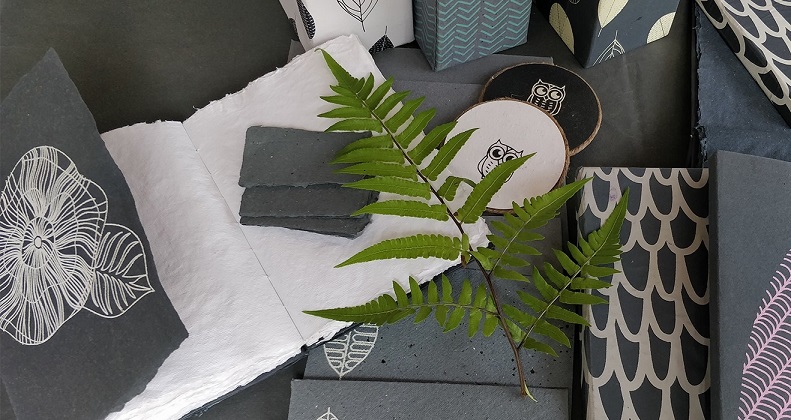
“These waste materials are sourced from factory units and farms, and contain a higher percentage of cellulose than tree fibre which comprises only 30-40 per cent. Additionally, in the conventional paper industry, about 60-80 chemicals are used to make paper thin and white,” informs the 41-year-old
Through their operations, Bluecat Paper collects about 20 tonnes of secondary waste from 100 farmers and five factory units each month. They not only pay stakeholders for the waste, but they also stop it from ending up in landfills. All of this is processed.
In making tree-free paper by upcycling the waste, they also save about 30 tonnes of wood per month and a minimum of 55,000 litres of water a day!
The journey towards making tree-free paper
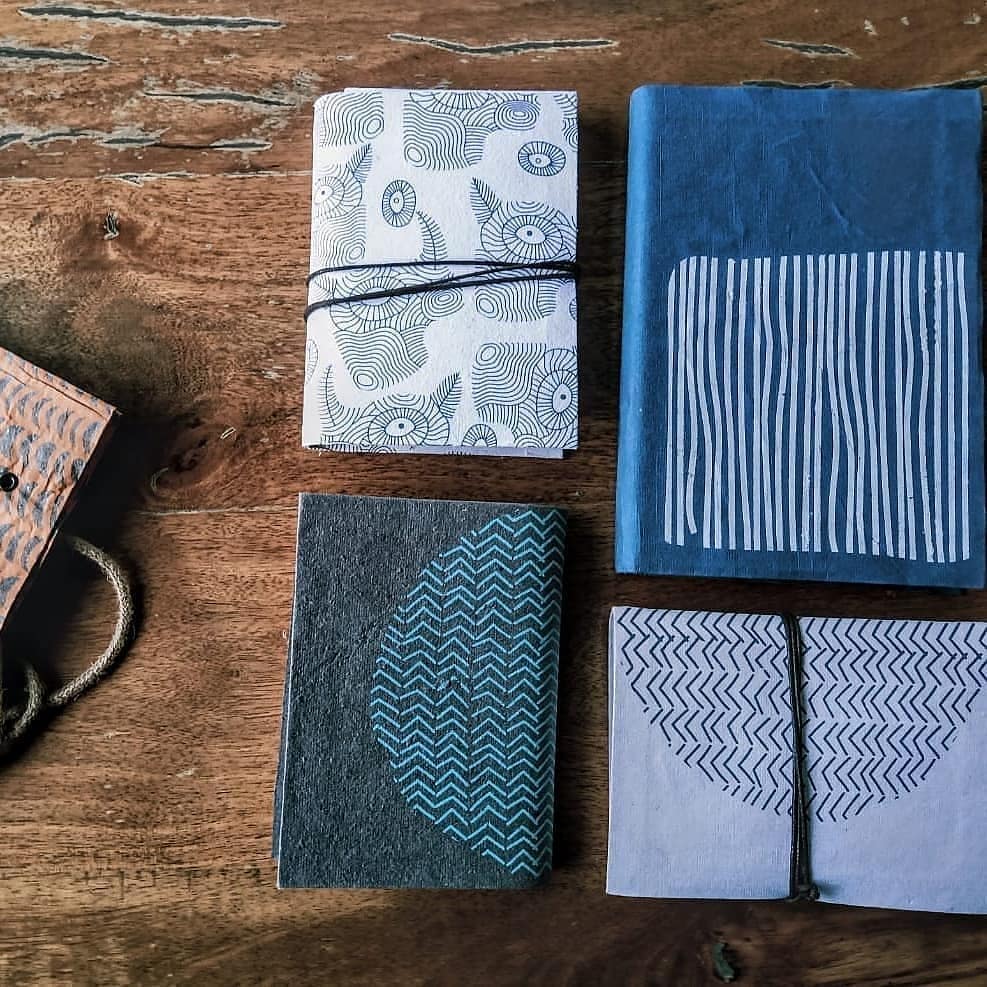
Bluecat Paper isn’t Kavya’s first entrepreneurial venture. After finishing her Bachelor’s degree in Commerce from St Joseph’s in Bengaluru in 2000, she worked at the Internationale Nederlanden Groep (ING) Bank. Here, she was taking care of insurance services.
In 2005, she decided to go back home to Coorg to pursue her entrepreneurial dreams. Two years later, she founded, ‘Amanvana Spa Resort’ in Coorg and saw it flourish.
“When you are running a spa resort, you have to print brochures, and naturally end up using a lot of paper. Since our resort is sustainable, I was not too thrilled that paper came from chopping trees. Naturally, it made me reluctant to use too much of the conventional paper,” she recalls.
This understanding led Kavya to look for cleaner sources of paper and the process of paper-making. Thus, in 2016, she embarked on a journey to make paper without trees.
During this time, she also started thinking about starting a new venture that dealt with something interesting, and paper-making was unique.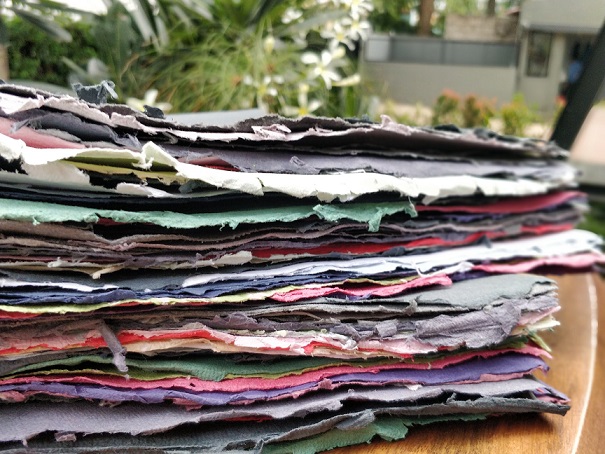
To understand the process of handmade papermaking, she went to Kumarappa National Handmade Paper Institute in Jaipur. Kavya spent about 15 days at the institute where she learned how to turn cotton rags and waste from the textile industry, into paper. She also learnt how to size this handmade paper for printing.
After she returned, she started speaking to scientists, researchers, horticulturists, farmers and found that cotton rags were just the tip of the iceberg. She learnt that cellulose, which was one of the main components to make paper, is found in a lot of other waste materials like flax, coffee husk, lemongrass, and so on.
With all this knowledge, Kavvya saw the potential in starting a business where paper could be made using these waste materials. On the one hand, she would help farmers and industries in getting rid of waste, ensuring it doesn’t end up in landfills. On the other hand, she would ensure that no trees are cut and no chemicals are used in the manufacturing process.
Thus, Bluecat Paper was founded and the 20,000 sq ft factory was set up in Peenya in Bengaluru.
Adding value to waste
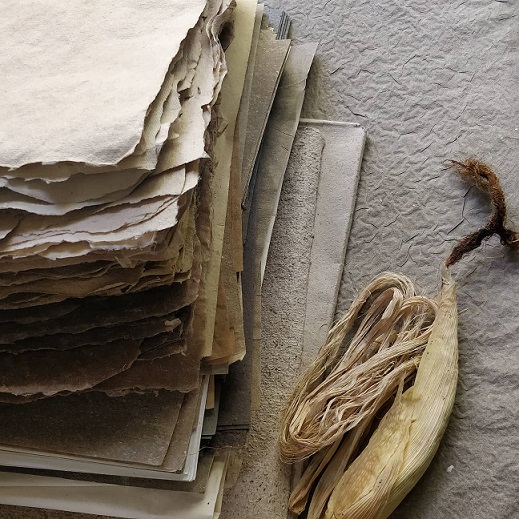
Once the factory was setup, Kavya knew that technology would play an important role in enabling the scaling of operations.
“I also found that most of the machinery in the market was tree-centric, meaning, they could only process wood to make paper. I realised that even after so many years, the paper-making industry had not progressed and that the technology in use was redundant,” she says.
To overcome this, Kavya got in touch with tech consultants and engineers to develop machinery. But, this turned out to be a challenging and money-draining exercise.
“I cannot tell you how much time, energy, and money has been spent on research and development for technology. Sometimes even after putting in so much effort, the machines would turn out to be duds. I spent over Rs 8 lakh in developing these machines. But, we did manage to make a few machines for our unit,” she says.
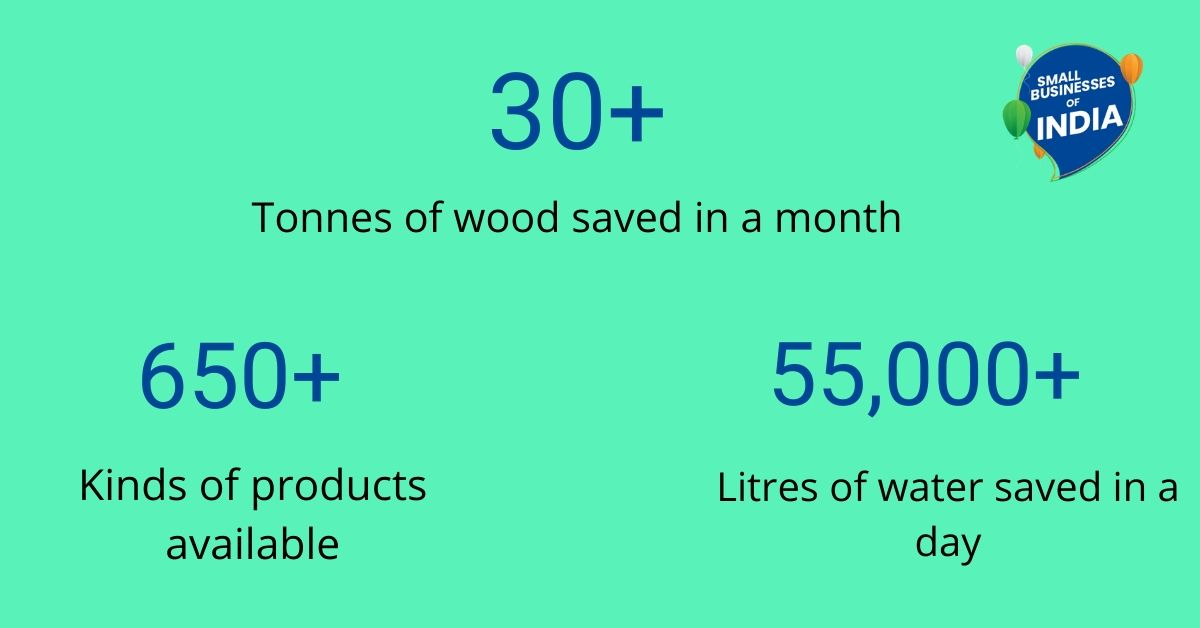
The unit contains a digester, which is essentially a cooker where all the different waste is cooked to remove lignin. This is a component that otherwise makes the husk or other waste too stiff to be processed into paper, and hence, it needs to be removed.
Then, there is a chopping machine to chop up all the husk into smaller pieces, a beater that mashes this into pulp, and a cylindrical mould vat which is used to make paper. Each sheet of paper is hung up manually to dry.
The most interesting part, however, is the unique waste material used to make the paper. The lemongrass husk, for example, is procured from industries in Peenya that manufacture essential oils. The cotton rags too are textile waste sourced from the area. Once they receive these rags, they sort them on the basis of colour, which later gives their paper its unique colour, without needing any dyes.
They also source waste like banana stumps, corn husk, coffee husk, etc from farmers.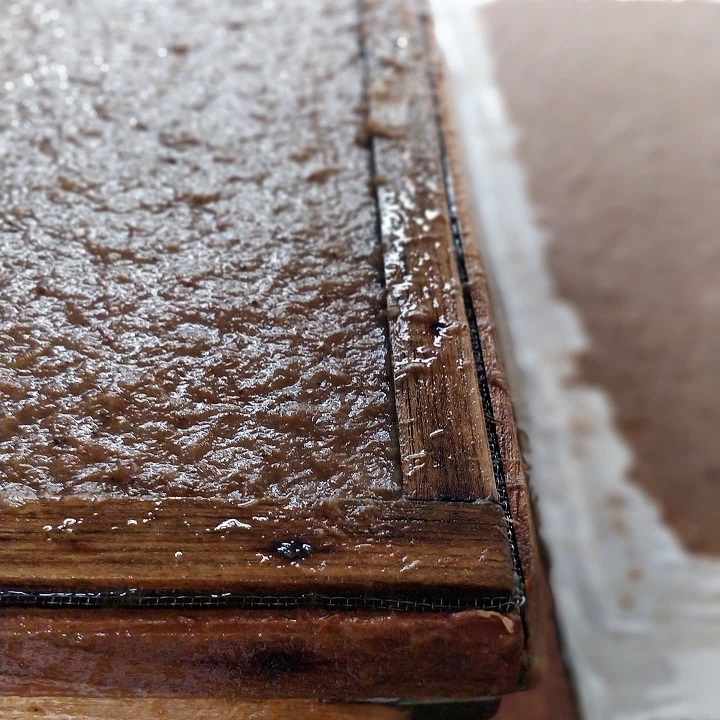
They source another interesting waste material from silk farmers!
“In Ramanagara, about 60 km from Bengaluru, many villagers practice sericulture. For this, they grow mulberry trees for silkworms feed on to produce the thread. But, they only eat the leaves, and the branches go to waste. That is why we began sourcing mulberry branches,” she says.
Bluecat Paper does not take this waste for free. In fact, they pay anywhere between Rs 8-120 per kg to their suppliers.
Unique paper produced consciously
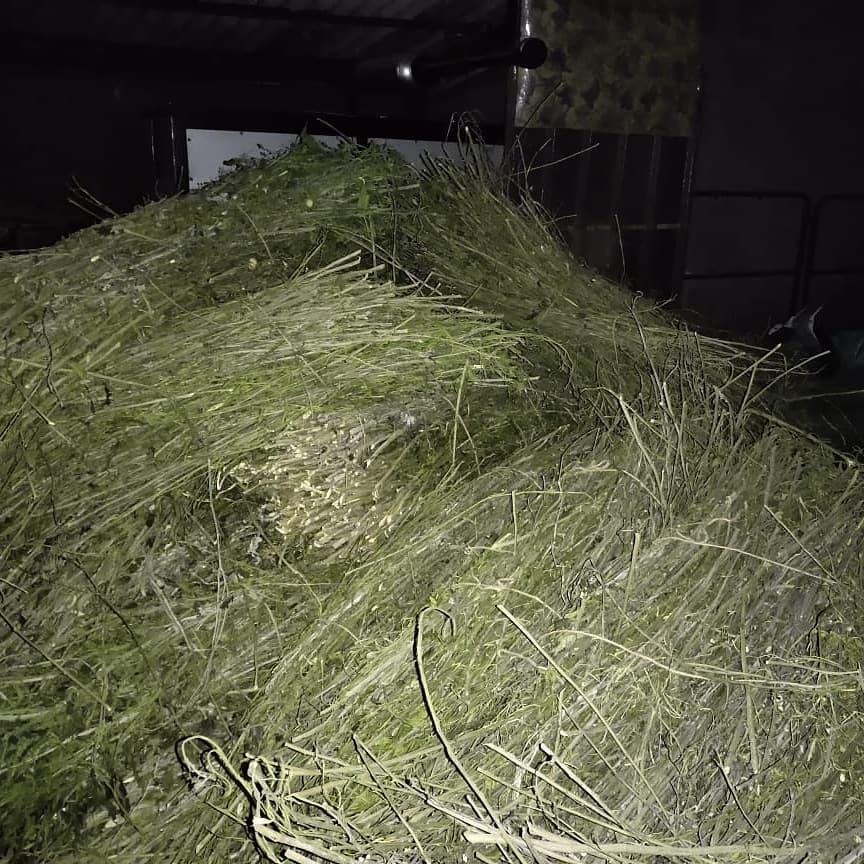
The mass-produced paper in the markets is heavily processed with chemicals to make it white. But at Bluecat paper, the white papers are made using white cotton rags, and is one of the most popular products.
They also make notebooks, bags, folders, folders, gift boxes, photo frames, table mats, envelopes, greeting cards, etc.
Bluecat Paper also makes bowls from cotton mache along with lampshades, hanging lamps, and string lights.
They also customise their products into boxes and wedding invitations. But they’ve employed an innovative idea for the wedding invitations which are essentially used just once.
“Since wedding cards are not reused, we incorporated seeds within the paper. So, once the invitation has fulfilled its purpose, one can just tear the paper and plant it in soil,” she says.
Bluecat Paper’s conscious values have also helped them in attracting like-minded clients who believe in their philosophy.
Bengaluru based architect Nisha Mathew Ghosh is one such example. In addition to having her own architecture firm, Nisha is also a designer for Eleatrz, a sustainable textile brand. When they came up with their new line of organic bed linen, Nisha was looking for sustainable packaging.
And, they found their answer in Bluecat Paper.
“We wanted to work with a brand that had similar values, and got in touch with Kavya. We briefed them about our requirements, and they checked with us about everything, from the graphics to the colours. We ended up sourcing 450+ boxes from them,” she smiles.
Overcoming hurdles for a greener planet
Kavya starts her day at 5:15 every morning and heads out for a run. Once she is back, she sends her child off to school. After a shower and breakfast, she begins her workday.
Every day throws up new challenges for the entrepreneur and Kavya deals with each of them, one day at a time.
“We are making the cleanest paper without causing any damage to the environment. Since mass-produced paper is so cheap, creating a market for tree-free handmade paper is hard,” she says.
Other than that, redundant technology is another deterrent as it prevents them from producing at scale.
“In a day, we are able to make 5,000 sheets of paper at max, but conventional mills can make five lakh tonnes a day! So, to create a market, we definitely need to produce more. Also, since we use different kinds of waste in our operations, we end up buying whatever is available and need efficient storage facilities. This is challenging,” she says.
Despite this, Kavya moves forward with hope.
Since they are a bootstrapped startup, Kavya hopes to break even soon. She looks forward to spreading the message of tree-free paper and bring down the cost of their products as much as possible.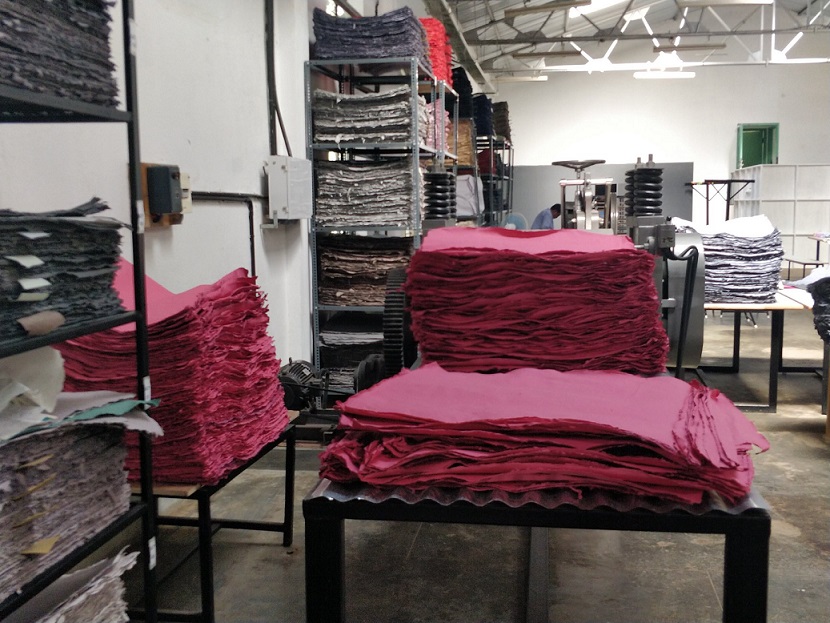
“It takes about 7-20 years for a tree to grow, so we need to stop cutting trees. When the human population is ever-increasing, and so is the waste, why not use that? I hope more factories across the world produce tree-free paper,” she says, signing off.
Rapid-fire:
*An entrepreneur you admire.
Ans: Elon Musk
*New tech that can transform the future of small businesses
Ans: Social media platforms like Instagram and Facebook
*One value that can help small businesses thrive
Ans: Consistency
*Any app/software that helps you manage your work
Ans: Asana
*Your favourite book
Ans: Conversations with Friends, by Sally Rooney
*In my free time I ____…
Ans: read
* Before this interview I was ____…
Ans: writing a blog
* A message for your past self about small businesses
Ans: Be patient
*Something they don’t teach in college but is important to run a business
Ans: Understanding Accounting principles
*Best advice you ever got is to ____…
Ans: make meditation a daily habit.
(Edited by Shruti Singhal)
Like this story? Or have something to share?
Write to us: [email protected]
Connect with us on Facebook and Twitter.
This story made me
- 97
- 121
- 89
- 167
Tell Us More
We bring stories straight from the heart of India, to inspire millions and create a wave of impact. Our positive movement is growing bigger everyday, and we would love for you to join it.
Please contribute whatever you can, every little penny helps our team in bringing you more stories that support dreams and spread hope.






